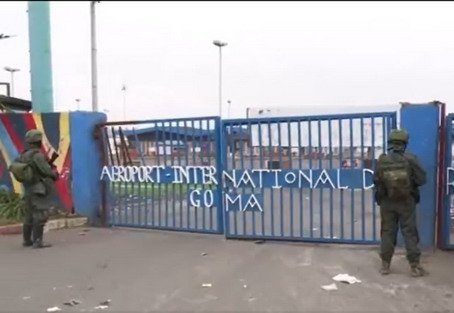
Although initially announced by the Chief of the SA National Defence Force (SANDF) as arriving back on Wednesday, it appears the bodies of the 14 South African troops killed in the Democratic Republic of Congo (DRC) will only return home on Friday.
defenceWeb understands that the mortal remains of the soldiers – killed during the M23 rebel advance on Sake and Goma in late January – have been handed over to the United Nations, which will lead the repatriation process.
SANDF Chief, General Rudzani Maphwanya, originally said the remains would return on Wednesday but this appears to have been delayed by access difficulties in Goma, which is controlled by the M23.
In a statement on Thursday, the SANDF said “all administrative processes were completed and handed over to the United Nations.The United Nations planned movement for the repatriation of the deceased out of the combat zone has been delayed.”
“It is important that our gallant soldiers must come home and be given dignified funerals. This is vital to ensure that families are afforded an opportunity to mourn,” said Dakota Legoete, the Chairperson of the Portfolio Committee on Defence and Military Veterans. The committees highlighted the urgent need for an investigation to assess the causal factors that led to the loss of life of so many soldiers.
Following the Rwandan-backed rebel takeover, South African soldiers are essentially confined to base in Sake and Goma Airport and apparently face limited food and water supplies. The M23 are believed to be controlling movements of SANDF and Southern African Development Community (SADC) Mission in the DRC (SAMIDRC) forces, which may have to leave their equipment behind if they exit the area.
Defence expert Helmoed Romer Heitman, writing an op-ed for Business Day, said the fall of Goma – after United Nations’ Monusco, DRC government and SAMIDRC forces failed to stop the M23 – “represents complete mission failure, and SADC and SA need to understand and accept this as the starting point in considering what to do next.” Options for what to do next include negotiate an “elegant withdrawal” of the SADC contingents from the DRC, or mount a major operation to relieve the SADC forces at Sake and Goma and resume the original mission after that, Heitman believes.
However, “given the failure of the mission, the limited availability of combat forces and the difficulty of any quick deployment for such an operation, a negotiated solution seems to be the better part of valour in this case,” Heitman stated. He added that deploying additional SAMIDRC forces – which is unlikely given its currently limited deployment – could put trapped soldiers in Sake and Goma at risk.
South Africa cannot rely on other forces to assist, given it was already contributing most troops to SAMIDRC, and it does not have sufficient capability to undertake any major operation. South Africa was due to contributed 2 900 troops to SAMIDRC, out of 5 000 total, but it is believed less than half of that number actually deployed.
“We must therefore, for the time being, give up any pretensions to being a regional or even subregional power,” Heitman believes, and South Africa should decide what role South Africa should play in Africa and then fund the SANDF accordingly.
President Cyril Ramaphosa will on Saturday take part in a summit in Dar es Salaam, Tanzania, that will see the eight nation East African Community (EAC) and its 16 member Southern African Development Community counterpart attempt to “find workable solutions to the longstanding impasse [in DRC]”.
Scholar, researcher, and public intellectual Professor Adam Habib believes a military solution for South Africa “is not on the table least of all because we do not have the capability to impose our will. A negotiated solution is the only game into town which needs to involve both Tshisekedi and Kagame, brokered by African regional bodies.”
Indications are Ramaphosa is reluctant to pull out of SAMIDRC, and the SANDF is understood to have sent reinforcements to the region. It also has over a thousand troops deployed with the United Nations mission in the DRC.
M23 rebels, meanwhile, have appointed top officials including a governor of North Kivu, to administer Goma and surrounding territory.
The United Nations has said the battle for Goma had left at least 2 900 people dead and many more thousands injured.










